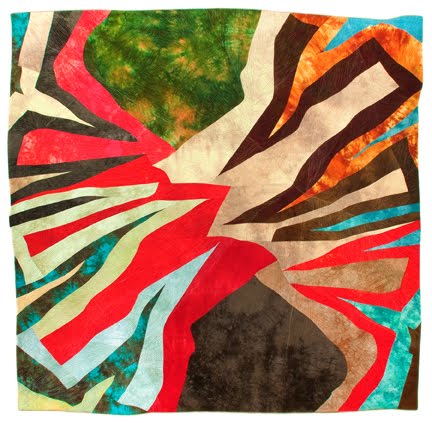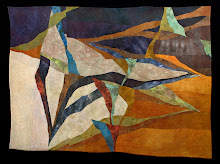The next day we flew from Cusco to Juliaca, where we were to take a bus to Puno on Lake Titicaca. I don't have many photos from this day, but it turned out to be one of our biggest adventures. This is the altiplano, the high plain, from the bus. I was surprised that it was so flat and dry. I obviously did not pay attention to the name, which is quite descriptive. It was hard to believe we were high in the Andes. Juliaca and Puno, our destination on the shores of Lake Titicaca, are both at about 12,500' above sea level.
As the sun started to set, we came upon a protest blocking the highway. Nearby residents were protesting for better roads to some of the outlying villages. They had spread rocks and boulders across the highway. Traffic was backed up in both directions. The road to Puno was definitely impassable. We sat on the bus while the sun went down and our tour guide made calls to figure out what we were going to do.
Then the tour guide said we would have to switch buses. They were going to send another bus out of Puno to pick us up on the other side of the protest. But we had to walk to the other bus. It was dark, the road was full of rocks, people had bonfires and were cooking in the middle of the highway, no bathrooms of course. We walked in the dark, mostly uphill, for about 2 hours at about 11,800 feet elevation to get to the other bus! Yes, I made it. No one had to carry me. The tour company sent some guys back in smaller buses to retrieve our luggage. Those men went above and beyond the call of duty. They traveled around the protest on a small dirt road, got as close to our orignal bus as they could get, then shuttled our luggage back to the small buses most of the night. They delivered all the luggage to our hotel at about 3:30 am! Such is travel in South America.
But, we woke the next morning in Puno to this view out the hotel window.
We walked down to the harbor to catch a boat to take us on a day tour of Lake Titicaca. Here's a view of Puno from the harbor.
These reeds grow in the lake around the shore areas. The Uros people have developed a unique lifestyle, using the lake resources to the maximum. They cut bricks out of the mud and reed roots and lash them together to make floating islands. There are about 50 floating islands in the Bay of Puno where about 2000 Uros people live. Cut, dried reeds are laid down crosshatch on top of the mud bales to build up the islands. Practically everything is made from reeds, including houses, boats, and beds. We stopped at one of the islands. I was surprised - again! My feet sank down into the reeds about 6" with every step, and I could feel the slight swaying of the island. The residents welcomed us, explained the island's construction, took us into their homes (which, by the way, are powered by solar panels), and displayed their handcrafts.
House with a solar panel.
Drying reeds.
Stone hearths are used to keep cooking materials away from the reeds.
The women are excellent embroiderers.
Next our tourboat took us to Isla Taquile. Our restaurant was partway up the hill, a 45 minute walk up from the harbor.
One of the men at the restaurant was knitting a chollo.
Some of the younger people showed us some of their traditional dances.
A shepardess hearding sheep on the island where there are no police, and no dogs!
The boat trip back to Puno took about 3 hours. That was our last day in Peru. We headed for the Bolivian border by bus the next morning.










































No comments:
Post a Comment